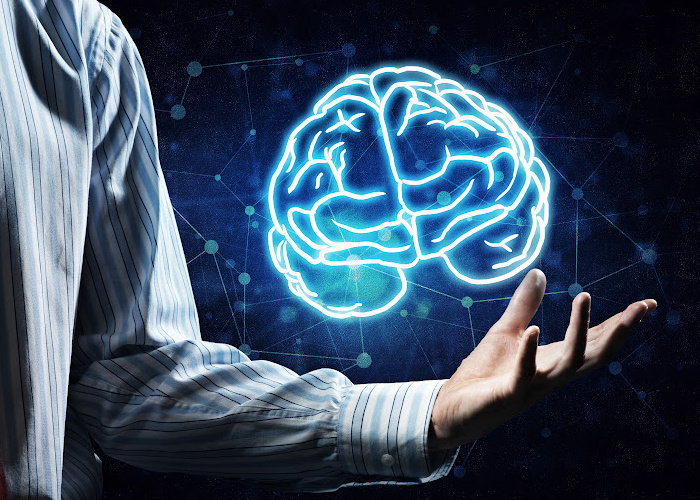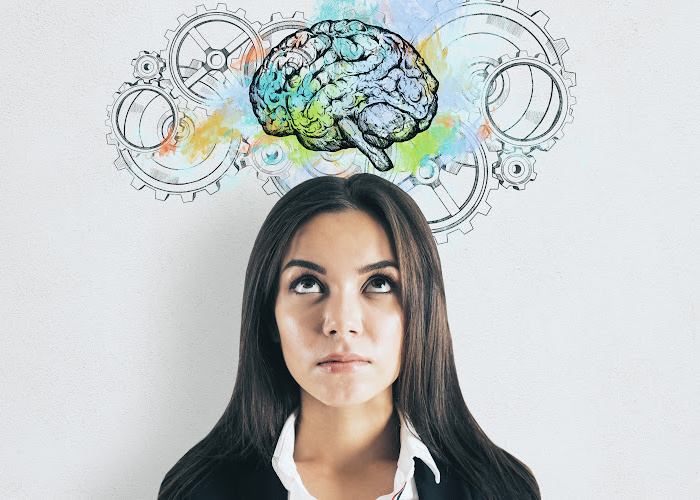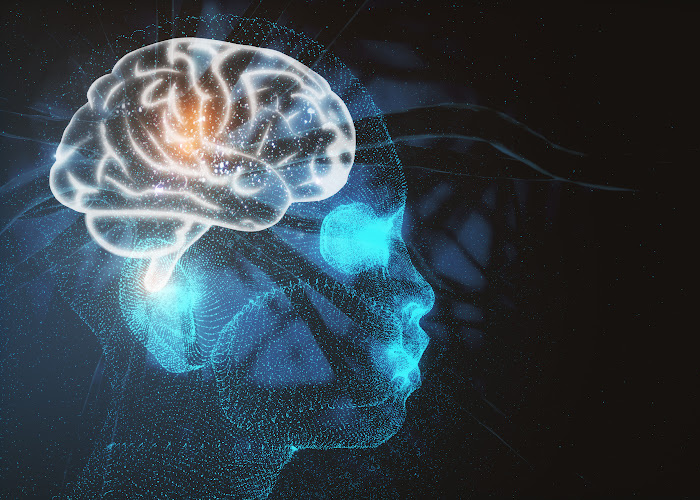It's crucial to know that students with autism and ADHD need special study strategies. Autism…

Your Ultimate Guide to TMS Therapy for the Treatment of Autism
Welcome to the world of Transcranial Magnetic Stimulation (TMS) therapy, a non-invasive brain stimulation technique that’s causing quite a stir in the field of autism treatment.
TMS offers an innovative approach, using magnetic fields to stimulate certain brain areas and potentially alleviate symptoms related to Autism Spectrum Disorders (ASD).
Intrigued? Let’s embark on a journey to explore this therapy and understand how it works, its benefits, and potential risks.
Key Takeaways
- TMS (Transcranial Magnetic Stimulation) is a noninvasive brain stimulation technique showing promise for treating Autism Spectrum Disorders (ASD), yet it’s currently ‘off-label’ and requires further research for full FDA approval and understanding of safety and efficacy.
- TMS operates by using magnetic fields to stimulate targeted brain areas, aiming to alleviate autistic symptoms through a series of sessions, but considerations like patient medical history and metal implants must be taken into account.
- While TMS may offer cognitive, social, and behavioral improvements for individuals with autism, it has potential risks and side effects, and its accessibility is impacted by high costs and variable insurance coverage.

Understanding TMS in the Context of Autism Spectrum Disorder
Transcranial Magnetic Stimulation, or TMS, is a form of noninvasive brain stimulation that utilizes magnetic fields to target specific brain areas. The concept behind TMS is that modulating brain activity could alleviate symptoms of various neurological disorders, including Autism Spectrum Disorders (ASD). The hope is that TMS could offer a new way to treat autism, by addressing some of the fundamental challenges these individuals face.
However, keep in mind that the use of TMS, especially repetitive transcranial magnetic stimulation (rTMS), for treating children with ASD is classified as ‘off-label’. This means that while the therapy shows promise, it’s not yet fully approved for this use and further research is needed to fully understand its effectiveness and safety.
As we examine the science behind TMS and the research so far, it’s necessary to approach it with an open mind. It’s a field filled with potential, but also one where much is still unknown.

The Science Behind TMS
We’ll begin by examining the scientific principles behind TMS. This therapy works by using magnetic fields to stimulate targeted areas of the brain, potentially leading to the reduction of symptoms related to conditions such as autism and other neurological disorders.
The magnetic field is generated by an electric current passing through a coil placed near the patient’s head. This magnetic field can modulate the activity of nerve cells in the brain, which in turn could help alleviate symptoms of neurological disorders. The position, magnitude, and frequency of the magnetic pulses used in TMS, including induced gamma frequency oscillations, can be modified to specifically target areas and achieve desired outcomes in the brain.
TMS therapy has demonstrated promise in treating various neurological conditions, including obsessive compulsive disorder (OCD), by disrupting the brain’s electrical fields and altering neuron firing and communication. As we continue to learn more about the brain and how it functions, the potential applications of TMS could expand even further.

TMS and Autism Research
Turning to the research, studies have demonstrated encouraging results using TMS for autism treatment, suggesting potential benefits in targeting specific brain areas like the medial prefrontal cortex. However, more research is needed to establish its long-term effectiveness and safety.
In these studies, various factors were taken into account, such as:
- The purpose of using TMS
- The mean age of participants
- The choice of stimulation site (with a focus on the dorsolateral prefrontal cortex)
- The intensity of TMS
- The number of stimulation sessions
Despite the promising results, it’s worth noting that TMS therapy has been used to treat various neurological conditions, including:
- major depressive disorder
- anxiety disorders
- obsessive-compulsive disorder
- post-traumatic stress disorder
- bipolar disorder
- schizophrenia
It has also shown potential in addressing autism symptoms. However, further research is needed to establish its efficacy and safety in treating autism.

The TMS Procedure: A Step-by-Step Overview
Having understood the science behind TMS and its potential benefits for individuals with autism, we’ll now examine what a typical TMS therapy session entails. The initial TMS treatment for autism usually lasts about sixty minutes, with the patient being brought to the treatment area and directed to sit in a recliner. Earplugs are provided for the patient to wear throughout the procedure.
A full course of TMS therapy generally consists of 30 sessions spread over a period of six weeks, with each session recommended to be 30 to 40 minutes in duration. The TMS psychiatrist determines the placement of magnets by positioning the magnetic arm of the machine near the front, left side of the patient’s head while they are seated. The level of magnetic energy is determined by alternating strong and weak pulses to find the threshold needed to move the fingers or thumb.
Preparing for TMS Therapy
Before undergoing TMS therapy, patients are advised to develop a thorough understanding of TMS and how it works. They are also urged to bring items that provide comfort to the session to facilitate relaxation.
Patients who have certain medical conditions or implants may not be suitable candidates for TMS therapy. Some contraindications for TMS therapy include:
- Having ferromagnetic or magnetically sensitive metal objects in the head or neck
- A history of seizures
- Metallic medical devices like cochlear implants or brain stimulators
It is important to consult with a healthcare professional to determine if TMS therapy is appropriate for you.
The initial evaluation for TMS therapy entails:
- Bringing the patient to the treatment area
- Ensuring their comfort
- Providing earplugs for protection
- Positioning the TMS device over the targeted brain area
- The patient experiencing a tapping sensation during the session
The number of sessions required may vary based on the individual’s response to treatment.
During the Session
During a TMS session, patients often report a tapping sensation on the head, mild tension in the scalp and facial muscles near the treatment area, and a feeling of pressure. Many patients find the procedure to be painless and feel relaxed during the session.
A typical TMS therapy session generally lasts for about 20 to 30 minutes. During the session, the motor threshold is determined by gradually increasing the magnetic dose until the patient’s fingers or hands begin twitching. This indicates the threshold and is used to calculate the required amount of magnetic energy for the session.
The magnetic coil is methodically maneuvered around the head and the magnetic energy is fine-tuned to determine the optimal location for stimulation during the TMS therapy session.
Post-Treatment Considerations
After a TMS session, patients may experience some side effects. These typically persist shortly after a session and show improvement over time with additional sessions. Patients can address discomfort by utilizing over-the-counter pain medications. Additionally, it is recommended to increase fluid intake before and after the session to minimize the potential for headaches or lightheadedness.
One of the advantages of TMS therapy is that patients are able to resume their regular activities immediately following treatment.

Potential Benefits of TMS for Individuals with Autism
The potential benefits of TMS for individuals with autism are substantial and span cognitive, emotional, and social improvements. TMS therapy has the potential to:
- Normalize brain rhythms
- Improve movement-related cortical potentials
- Enhance cognition
- Improve imitation skills, which are often challenged in individuals with autism
- Support executive function skills such as self-monitoring and corrective actions, which are crucial for cognitive development.
TMS therapy aims to address the fundamental pathological aspects of autism, which may lead to improved emotional understanding and recognition in individuals. Deep TMS, in particular, has shown potential in enhancing emotional recognition and reducing obsessive-compulsive symptoms in adults with autism.
Additionally, TMS therapy has been associated with improvements in social functioning, such as enhanced eye-gaze behavior, which is crucial for social interaction, and a better understanding of social cues, both of which are essential for effective communication and integration in social settings.
Cognitive and Behavioral Improvements
Cognitive improvements observed in autistic patients after TMS therapy include enhanced autistic symptoms, improved eye-gaze behavior, and reduction in irritability and repetitive behavior. Repetitive TMS (rTMS), a form of TMS therapy, has demonstrated the ability to enhance eye-gaze behavior in autistic individuals, which is instrumental in improving their learning abilities.
Recent studies indicate that TMS has the potential to offer rapid and noninvasive pathophysiological ASD biomarkers that may impact attention span in individuals with autism. The use of TMS for this purpose, particularly in children with ASD, is still being evaluated. Indeed, there have been documented case studies illustrating behavioral enhancements following TMS therapy, including improved mood and heightened adaptive functioning.
Emotional and Social Enhancements
TMS therapy targets fundamental pathological aspects of autism and has shown potential in modifying neurological function, contributing to improved emotional regulation. More specifically, the application of low frequency TMS to brain regions like the dorsolateral prefrontal cortex reduces gamma activity, which is associated with emotional processing.
TMS therapy may lead to improvements in social skills in individuals with autism, including:
- Enhancements in communication abilities
- Improved daily living skills
- Increased empathy
- Better understanding of social cues
- Increased concentration
After undergoing TMS therapy, individuals with autism may potentially experience a decrease in repetitive behaviors, a reduction in irritability, and improvements in specific measures of attention.

Risks and Limitations of TMS for Autism Treatment
While TMS therapy presents potential benefits for individuals with autism, it’s also necessary to consider the potential risks and limitations. The overall prevalence of adverse effects (AEs) in TMS therapy for autism was found to be 25% with a 95% confidence interval of 18–33%.
The combined prevalence of adverse effects associated with TMS in ASD in this study was found to be lower than in the previous review. However, seizures are an infrequent yet significant side effect of TMS therapy in autism spectrum disorders.
Evaluating the risk of bias in a systematic review and meta-analysis of TMS for autism spectrum disorder is key to understanding the Risks and Limitations of TMS for Autism Treatment, ensuring the quality and reliability of the research findings presented in the article.
Known Side Effects
Frequently encountered side effects of TMS therapy encompass headaches, scalp discomfort, and facial twitching; however, these are generally mild and transient. The severity of TMS side effects in patients with autism can vary. Commonly reported side effects include headache, irritability, itching, facial discomfort, sleepiness, improved mood, and pain at application. Seizures are a rare but serious side effect. The risk is low, at less than one percent..
In patients with autism, TMS therapy may result in minor physical side effects like headache, neck pain, and discomfort at the treatment site. However, it has also been demonstrated to normalize gamma oscillations and enhance cognitive performance in certain patients.
Considerations for Specific Patient Populations
Individuals with metal implants in the head or neck region, including:
- cochlear implants
- dental implants
- aneurysm clips or coils
- stents in the neck or brain
- deep brain stimulators
- implants affected by physiological signals such as pacemakers and implantable cardioverter defibrillators
are typically not suitable candidates for TMS therapy.
The use of devices in TMS therapy has the potential to interact with a range of medications, including antidepressants and benzodiazepines, as well as substances such as food and alcohol, which may result in side effects, reduced medication efficacy, or increased effectiveness.

TMS Versus Other Therapeutic Options for Autism
When we consider TMS therapy, it’s also necessary to compare it with other therapeutic alternatives for autism. Occupational Therapy has substantial evidence supporting its efficacy in enhancing outcomes for children with autism. However, additional research is necessary to establish the effectiveness of TMS therapy in addressing autism.
The primary pharmacological interventions for autism consist of antipsychotic drugs such as risperidone and aripiprazole, which have received FDA approval for addressing irritability associated with autism spectrum disorder. Nonetheless, behavioral therapy continues to be the predominant form of treatment for autism due to its comprehensive impact.
Research supports ABA therapy as an effective intervention for autism, enhancing social skills and typically administered by proficient professionals. TMS therapy may be seen as a supplementary or alternative treatment, particularly when conventional therapies like ABA fail to produce desired results or are not readily available.
Traditional Autism Therapies
Behavioral therapy for the treatment of autism operates by:
- Providing children with concise, straightforward tasks
- Offering rewards upon successful completion
- Strengthening desired behaviors
- Diminishing undesired behaviors
Traditional therapies for autism have varying treatment approaches, including:
- Yoga
- Massage
- Herbal remedies
- Mindfulness
- Biological treatments like melatonin and homeopathy
- Evidence-based practices like Applied Behavior Analysis (ABA)
Pharmacological Treatments and Their Limitations
The prevailing pharmacological interventions for Autism Spectrum Disorder encompass antipsychotic medications, particularly risperidone and aripiprazole, both of which have received FDA approval. Nonetheless, although these drugs can mitigate the irritability linked to ASD, they are not deemed efficacious in addressing the primary symptoms of Autism.
Drug therapy should not be viewed as a definitive solution for autism spectrum disorder or all of its symptoms. Although it may aid in the management of specific symptoms like irritability, drug therapy is subject to limitations. Clinical trials for autism drugs have faced difficulties in terms of design and outcome measures, and certain medications have notable drawbacks.
When utilizing medications like Abilify (aripiprazole) and Risperdal (risperidone) for Autism treatment, it’s important to be aware of potential side effects, such as weight gain and increased prolactin levels, which are often without symptoms. Additionally, the commencement of treatment with high doses may lead to akathisia, a troubling sensation of restlessness.

Real-Life Stories: TMS Therapy Success Cases
Research has shown the efficacy of TMS therapy, especially targeted rTMS, in relieving symptoms associated with ASD. Some of the benefits of TMS therapy for individuals with autism include:
- Improved social interaction
- Reduced repetitive behaviors
- Decreased anxiety and depression
- Enhanced cognitive function
There are also anecdotal reports of individuals with autism seeing improvements following transcranial magnetic stimulation.
Several documented cases have shown individuals with Autism reporting improved emotional empathy following TMS therapy. There are also success stories of individuals with severe Autism experiencing substantial improvements after undergoing TMS therapy.
TMS therapy has the potential to improve specific symptoms and behaviors in individuals with Autism Spectrum Disorder (ASD), which could result in an improved quality of life. Research indicates that while not universally beneficial, TMS therapy has demonstrated promise in addressing symptoms such as:
- Social communication difficulties
- Repetitive behaviors
- Sensory sensitivities
- Anxiety and depression
Further research is needed to fully understand the effectiveness of TMS therapy for individuals with ASD.
Summary
In conclusion, TMS therapy presents an exciting avenue of potential benefit for individuals with autism. While it’s not a one-size-fits-all solution, it offers possibilities for cognitive, emotional, and social improvements. While further research is required to fully understand its long-term effectiveness and safety, real-life success stories provide hope that TMS could be a beneficial addition to the existing range of autism therapies. Armed with the right information, patients and their families can make informed decisions about whether TMS therapy could be a suitable option for them.

Frequently Asked Questions
What is the most effective treatment for autism?
The most effective treatment for autism is behavioral therapies based on applied behavioral analysis (ABA), which offers different types to choose from based on your child’s needs. Consider exploring ABA interventions for your child’s strengths and requirements.
Is TMS FDA approved for autism?
No, TMS is not FDA approved for autism and is considered “off-label” for this use.
What is Transcranial Magnetic Stimulation (TMS)?
Transcranial Magnetic Stimulation (TMS) is a non-invasive brain stimulation technique using magnetic fields to target specific areas of the brain and has potential for treating various neurological disorders.
What does a typical TMS therapy session involve?
A typical TMS therapy session involves the patient sitting in a recliner with earplugs for about 60 minutes. This ensures a comfortable and controlled environment for the treatment.
What potential benefits does TMS offer for individuals with autism?
TMS therapy offers potential benefits for individuals with autism, such as normalizing brain rhythms, improving movement-related cortical potentials, enhancing cognition, improving imitation skills, and also improving emotional understanding and recognition, as well as social skills. Therefore, it can be a promising intervention for individuals with autism.



This Post Has 0 Comments